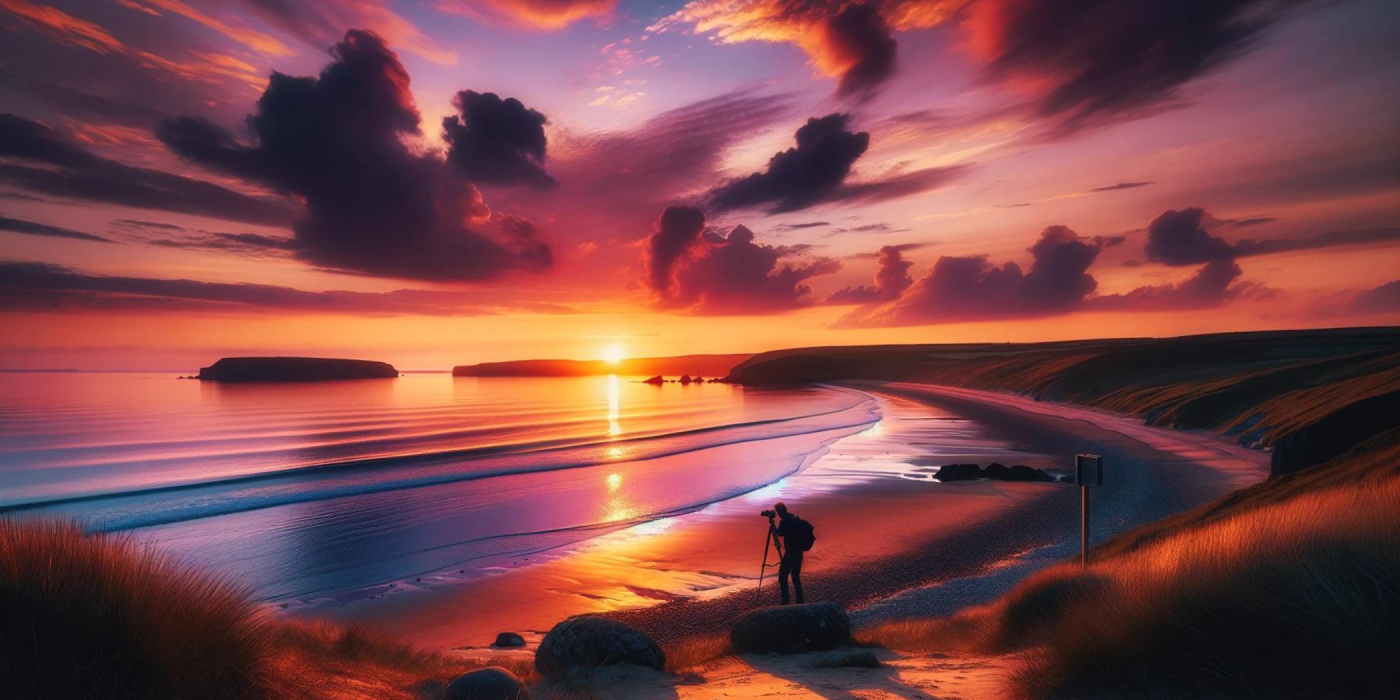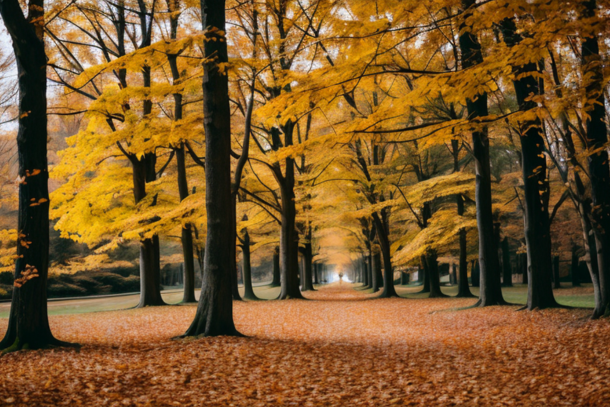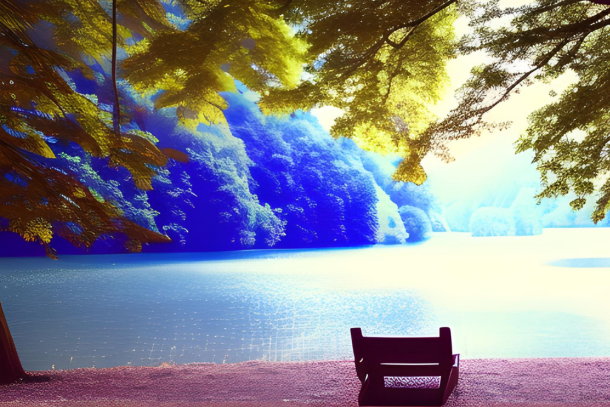Capturing the Perfect Sunset: Tips and Techniques

Capturing the beauty of a sunset is a rewarding experience for any photographer.
The rich hues of the setting sun, the dramatic play of light and shadow, and the tranquil ambience create stunning photographic opportunities. Sunset photography is not only about the aesthetic pleasure it offers but also about the technical prowess it requires.
The Beauty and Appeal of Sunset Photography
Sunsets have long been a source of inspiration for artists and photographers alike. The sky, painted with vivid oranges, pinks, purples, and blues, provides a unique and ever-changing canvas. Capturing this natural spectacle can evoke a sense of peace and wonder, making it a favourite subject for photography enthusiasts. The interplay of light and shadow during sunset can transform ordinary landscapes into magical scenes, highlighting the textures and details that are often missed during the day.
Importance of Timing
Timing is crucial in sunset photography. The period known as the "Golden Hour," which occurs just after sunrise and before sunset, is particularly prized for its soft, warm light. During this time, the sun is low in the sky, casting long shadows and creating a golden hue that enhances the landscape's natural beauty. Arriving at your chosen location well in advance allows you to set up your equipment, scout for the best angles, and adjust your camera settings to capture the perfect moment as the sun dips below the horizon.
Significance of Location
The location plays a pivotal role in capturing stunning sunset images. Scenic spots such as beaches, mountains, and open fields are ideal as they provide unobstructed views of the horizon. In the UK, locations like the Dorset coastline, the Lake District, and the Scottish Highlands offer breathtaking sunset vistas. Choosing a location with interesting foreground elements, such as trees, rocks, or water, can add depth and interest to your photographs, making them more compelling.
In conclusion, the beauty and appeal of sunset photography lie in its ability to capture the fleeting moments of nature's splendour. By understanding the importance of timing and selecting the right location, you can enhance your chances of capturing truly stunning sunset images.
Understanding Sunset Photography
Explanation of the "Golden Hour" and Its Significance
The "Golden Hour" is a term that refers to the period shortly after sunrise and before sunset when the daylight is softer and more diffused. During this time, the sun is lower in the sky, which results in longer shadows and a warm, golden hue that is particularly flattering for photography. Capturing a sunset during the Golden Hour can yield stunning results, as the light is less harsh compared to midday, providing a natural glow that enhances the colours and textures in your photos.
The Role of Weather Conditions in Enhancing Sunset Colours
Weather conditions play a crucial role in the quality and appearance of sunset photographs. Clear skies can produce vibrant, bold colours, while clouds can add dramatic elements to the scene. Here are a few weather conditions and their impact on sunset photography:
Clear Skies
Clear skies often result in vivid oranges, pinks, and purples as the sun dips below the horizon. The absence of clouds allows the sunlight to scatter more directly, creating a striking contrast against the sky.
Partly Cloudy
Partly cloudy conditions can enhance a sunset by adding layers and texture to the sky. Clouds can catch and reflect the light, creating dynamic patterns and a spectrum of colours that range from deep reds to soft pastels.
Overcast
While overcast conditions might seem less ideal, they can still provide unique photographic opportunities. The diffused light can result in softer, more muted tones, creating a serene and moody atmosphere.
Understanding how different weather conditions affect the light and colours during a sunset can help you plan your shoots more effectively and capture the perfect sunset photograph.
Essential Equipment
Recommended Cameras and Lenses for Sunset Photography
When capturing the perfect sunset, the choice of camera and lens is crucial. While modern smartphones can take impressive photos, a DSLR or mirrorless camera offers more control and higher quality. Look for cameras with good low-light performance and a wide dynamic range to handle the bright and dark areas in sunset scenes. Recommended models include the Canon EOS R6, Nikon Z6 II, and Sony A7 III.
Lenses play a significant role in sunset photography. A wide-angle lens (16-35mm) captures more of the scene and is ideal for dramatic landscapes. For detailed shots or focusing on specific elements, a medium telephoto lens (50-100mm) works well. Lenses with a wide aperture (f/2.8 or lower) are beneficial for low-light conditions and achieving a pleasing bokeh effect.
Importance of Using a Tripod for Stability
Stability is paramount in sunset photography, especially as the light fades. Using a tripod prevents camera shake, allowing for longer exposure times without blur. This is particularly important for capturing the subtle hues and details of a sunset. A sturdy yet lightweight tripod is ideal for outdoor photography. Brands like Manfrotto and Gitzo offer excellent options.
Additional Accessories
Filters
Filters can significantly enhance sunset photos. A graduated neutral density (GND) filter balances the exposure between the bright sky and darker foreground, preventing overexposure of the sky. A polarising filter reduces reflections and increases colour saturation, making the sunset hues more vibrant.
Remote Shutters
A remote shutter release is another valuable accessory. It allows you to take photos without physically pressing the camera’s shutter button, reducing the risk of introducing movement. This is particularly useful for long exposures and bracketed shots.
With the right equipment, your sunset photography can reach new levels of creativity and quality. Invest in these tools to capture stunning sunsets with clarity and depth.
Choosing the Right Location
Selecting the perfect spot for capturing stunning sunset photographs is crucial for achieving breath-taking results. Here are some tips for scouting and selecting the ideal location, along with examples of some of the most picturesque sunset spots in the UK.
Tips for Scouting and Selecting the Perfect Spot
Research and Planning
- Begin by researching popular sunset locations in your area. Use online resources, photography forums, and social media platforms to find recommendations.
- Check local weather forecasts to ensure clear skies and minimal cloud cover, which can enhance the colours of the sunset.
- Consider the direction of the sunset and the landscape features that will be illuminated. Coastal areas, hills, and open fields often provide unobstructed views.
Arrive Early
- Arriving at your chosen location well before sunset allows you to explore the area, set up your equipment, and choose the best vantage points.
- Scout for foreground elements such as trees, rocks, or water bodies that can add depth and interest to your composition.
Experiment with Different Angles
- Don’t be afraid to move around and experiment with various angles and perspectives. Sometimes the best shots are found from unexpected viewpoints.
- Look for reflections in water or interesting shadows cast by the setting sun.
Examples of Stunning Sunset Locations in the UK
Durdle Door, Dorset
- The iconic limestone arch on the Jurassic Coast offers a dramatic backdrop for sunset photography. The sun sets over the sea, creating a stunning scene.
St Ives, Cornwall
- Known for its beautiful beaches and charming harbour, St Ives provides numerous spots for capturing magnificent sunsets over the Atlantic Ocean.
Richmond Park, London
- This vast parkland offers expansive views and diverse landscapes, perfect for sunset shots. The park’s ponds and ancient trees add character to your photos.
Arthur's Seat, Edinburgh
- A climb to the top of this ancient volcano rewards you with panoramic views of the city and beyond, making it an excellent spot for sunset photography.
By carefully selecting your location and considering these tips, you can enhance your chances of capturing the perfect sunset photograph, showcasing the natural beauty of the UK.
Camera Settings for Sunset Photography
Optimal Settings
ISO
When capturing sunsets, it’s essential to manage the ISO settings properly. Lower ISO values, such as 100 or 200, are preferable as they help in reducing noise and preserving the rich colours of the sunset. Higher ISO settings might introduce graininess, which can detract from the overall quality of the image.
Aperture
Aperture settings play a crucial role in determining the depth of field and the amount of light entering the camera. For sunset photography, an aperture between f/8 and f/16 is ideal. These settings ensure that most elements in the frame, from the foreground to the horizon, remain sharp and well-defined, while also controlling the exposure to maintain the natural hues of the sunset.
Shutter Speed
Shutter speed needs careful adjustment to balance exposure. Faster shutter speeds (e.g., 1/250 or higher) can freeze motion and capture sharp details in the sky and surroundings. However, if you want to experiment with light trails or a more dreamy effect, slower shutter speeds (e.g., 1/30 or slower) can be used, provided you stabilise the camera with a tripod to avoid blurriness.
Adjusting White Balance for Accurate Colours
Preset White Balance
Using the preset white balance settings on your camera can simplify the process. The “Daylight” or “Sunset” presets are often suitable for maintaining the natural warmth of sunset colours. However, these presets might not always perfectly match the scene, and manual adjustments could be necessary.
Custom White Balance
For more precise control, setting a custom white balance can be highly effective. Start by photographing a white or grey card under the same lighting conditions as your sunset scene. This reference image can then be used to set a custom white balance, ensuring that the colours in your photos are accurate and vibrant.
Post-Processing Adjustments
Even with careful in-camera settings, post-processing can enhance the final image. Adjust the white balance during editing to fine-tune the colour temperature and tint, ensuring that the sunset’s natural beauty is accurately represented. Tools like Adobe Lightroom or Photoshop offer extensive options for these adjustments, allowing you to perfect the colour balance and achieve the desired effect.
Composition Techniques
Rule of Thirds and Its Application in Sunset Photography
The rule of thirds is a fundamental composition technique in photography, particularly effective for capturing sunsets. This principle involves dividing your image into nine equal parts by two equally spaced horizontal lines and two equally spaced vertical lines. By placing key elements of the scene along these lines or at their intersections, you create a balanced and visually appealing photograph.
When photographing sunsets, position the horizon along the top or bottom third of the frame rather than the centre. This placement allows for more dynamic compositions, either emphasising the sky's colours or the landscape's features. Similarly, placing the sun off-centre can add interest and prevent the image from feeling static.
Tips for Incorporating Foreground Elements to Add Depth
Incorporating foreground elements can significantly enhance the depth and interest of your sunset photographs. Foreground elements might include trees, rocks, water bodies, or even human silhouettes. These elements provide a sense of scale and lead the viewer's eye into the scene.
Using Natural Features
Look for natural features that can act as leading lines, guiding the viewer’s gaze towards the sunset. For example, a winding path, a river, or the edges of cliffs can draw the eye into the image and towards the horizon.
Silhouettes and Shadows
Silhouettes are particularly effective in sunset photography. Positioning a subject, such as a tree or a person, against the vibrant backdrop of the setting sun can create striking contrasts and dramatic effects. Ensure your exposure settings highlight the vivid colours of the sky while rendering the foreground subject in silhouette.
Reflections and Water Bodies
Water bodies, such as lakes, rivers, or the sea, can provide beautiful reflections of the sunset. Position yourself to capture the mirrored image, which can add symmetry and balance to your composition. Reflections also double the impact of the colours and light in your photograph.
By thoughtfully applying the rule of thirds and incorporating compelling foreground elements, you can transform your sunset photographs from ordinary to extraordinary. Experiment with different perspectives and compositions to discover what works best for each unique sunset.
Post-Processing Tips
Basic Post-Processing Techniques to Enhance Sunset Images
Post-processing is an essential step in sunset photography, allowing you to bring out the vivid colours and intricate details captured during the golden hour. Here are some basic techniques to enhance your sunset images effectively:
Adjusting Exposure and Contrast
Start by adjusting the exposure to ensure your image is neither too dark nor too bright. Increasing the contrast can help make the colours pop, adding depth and dimension to the scene.
Enhancing Colours
Use the vibrance and saturation settings to enhance the natural colours of the sunset. Be cautious not to overdo it, as this can lead to unrealistic and overly saturated images. Fine-tuning the white balance can also help in achieving the perfect hues.
Sharpening and Clarity
Apply sharpening to highlight the details and improve the overall clarity of the image. Adjusting the clarity slider can enhance mid-tone contrasts, giving the image a more defined look.
Recommended Software and Tools for Editing
Having the right tools can make a significant difference in your post-processing workflow. Here are some recommended software and tools to help you achieve the best results:
Adobe Lightroom
Adobe Lightroom is a popular choice among photographers for its powerful yet user-friendly interface. It offers a wide range of tools for exposure adjustments, colour correction, and detailed editing.
Adobe Photoshop
For more advanced editing, Adobe Photoshop provides extensive capabilities. From blending exposures to advanced retouching, Photoshop allows you to manipulate every aspect of your sunset images.
Affinity Photo
Affinity Photo is a cost-effective alternative to Adobe’s offerings, providing professional-grade tools for photo editing. It supports RAW processing and offers a comprehensive suite of features for detailed enhancements.
Capture One
Capture One is known for its superior colour grading and tethered shooting capabilities. It’s particularly beneficial for photographers who require precise colour adjustments and high-quality output.
By mastering these post-processing techniques and utilising the recommended software, you can transform your sunset photos into stunning visual masterpieces.
Embrace the Journey
Embarking on the journey of sunset photography is as much about the experience as it is about the end result. Capturing the perfect sunset requires patience, practice, and a willingness to experiment with different techniques. Each sunset is unique, offering a new opportunity to refine your skills and discover new perspectives.
Practice Makes Perfect
Consistent practice is key to mastering sunset photography. Experiment with various camera settings, compositions, and locations to understand what works best for you. Don't be discouraged by initial setbacks; each attempt brings you closer to capturing that perfect shot. Remember, even professional photographers have to take numerous photos to get that one stunning image.
Share Your Experiences
Sharing your sunset photos and experiences can be incredibly rewarding. It not only allows you to showcase your work but also to connect with a community of like-minded individuals. Consider joining photography forums, social media groups, or local clubs to share your journey and gain valuable feedback.
Social Media and Photography Forums
Social media platforms such as Instagram, Flickr, and specialised photography forums provide excellent venues to display your sunset photos. Use relevant hashtags and engage with other photographers to increase your visibility and learn from their work.
Local Photography Clubs
Joining a local photography club can provide you with opportunities for group outings and workshops. These experiences can offer hands-on learning and the chance to see how others approach sunset photography.
Inspire and Be Inspired
By sharing your photos and stories, you can inspire others to explore sunset photography. Your unique perspective and tips can help newcomers develop their skills and appreciate the beauty of nature. Likewise, seeing the work of other photographers can inspire you to try new techniques and visit new locations.
Sunset photography is a wonderful blend of art and science, offering endless possibilities for creativity and exploration. So, grab your camera, find a beautiful spot, and start capturing the magic of sunsets.
Related to this article are the following:
I do hope you have enjoyed this article and hope that you will subscribe to my newsletter so you can get the latest information about all things naturally relaxing.
Stay in touch, join the Naturally Relaxing Newsletter
Newsletter Signup
Post Your Comments
or post as a guest
Be the first to comment.
Latest articles in Relaxation

The Benefits of Aromatherapy: Essential Oils for Relaxation

Embracing Calm: Innovative Ways to Relax in the New Year

Autumn Aromatherapy: Essential Oils for Relaxation

Embracing Autumn's Tranquillity: Finding Peace in the UK's Golden Season

Engage with Relaxation: UK's Ultimate Guide to Wellness & Calm






